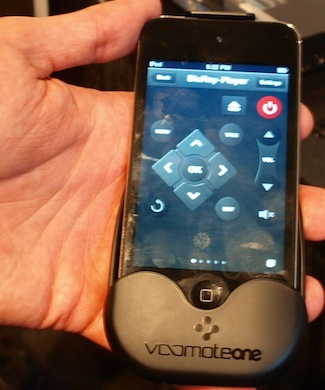When Comcast acquired NBC from General Electric, one of the conditions in the FCC order approving the acquisition was that this media conglomerate must carry in their existing news neighborhoods “all independent news and business news channels”—like, for example, Bloomberg’s upstart TV channel.
You knew Comcast wasn’t going to make this easy.
Earlier this month, Bloomberg filed a complaint with the FCC against Comcast in which it documented in excruciating detail how in the 35 most populous DMAs (designated market areas), Comcast effectively exiles Bloomberg’s content away from a key block of consecutive news channels.
The correspondence summarized in the complaint between Dan Doctoroff, President of Bloomberg, and Comcast’s Neil Smit is comical in a bureaucratic, miscommunication kind of way.
According to Bloomberg’s account, Smit said that Comcast had no news neighborhoods, and in any case, the FCC order was prospective in nature, regarding future neighborhoods. When executives from both companies couldn’t come to an agreement, the lawyers then made their entrance onto the stage.
It does appear in reading this tragicomedy work that Comcast has backpedaled a little on its claims: what they’re really saying, in spite of what they agreed to with the FCC, is that adding a new neighbor into a news block is way more work than they signed up for.
Bloomberg’s filing (see below) has a thorough accounting of all of Comcast’s video “head-ends” in the top DMAs. There are 485 of them, feeding the big US cities and metro regions.
Of those, 418 head-ends have news neighborhoods—defined as 4 news channels within a block of 5—and also carrying Bloomberg TV or BTV somewhere in the video stream.
Their conclusion: Of the 418 relevant head-ends in the top 35 DMAs, 368 exiled BTV away from where the major news players have their homes.

Does this make news neighborhoods obsolete?
Bloomberg does concede that there are head-ends with two news clumpings, one below channel 100 and another found in the 3-digit territory, but they represent a teeny minority.
Unfortunately, some of the more interesting information had been redacted, but as an example of what Bloomberg is getting at, I refer you to Exhibit A in the complaint.
I discovered that in Somerset County, NJ, not too far from our editorial offices, and smack in the NYC DMA, Comcast subscribers can with a few clicks of their TV remotes view news shows between channels 36 to 40, where they can find CNBC, Fox, CNN, CNN Headline, and MSNBC.
But no BTV.
Of course, I’m being too simplistic.
Comcast disputes, well, just about everything: the negotiations between the two parties leading up to the FCC complaint, what the FCC merger order really intended, and what constitutes a neighborhood.
And even if Comcast is redlining BTV, do you think it’s easy for this cable operator to just insert a news channel, like they can just turn on a switch?
Comcast’s General Counsel contends that wedging BTV into a desirable news neighborhood would set off a “cascading chain reaction”, a kind of nuclear explosion that would dislodge other channels, and confuse viewers who expect to find the Discovery Channel on say 41 and not some other exotic number.
Wading through this makes you realize how quaint (and profitable) it is to be a old media toll keeper: finite namespaces (those funny 2- and 3-digit URLs), and mysterious legacy technologies that turn simple configurations into highly complex procedures.
Can you imagine an Internet company saying it would be too difficult to add a new entry to a menu or create a favorites bookmark to hold a few URLs?
While we’re on the subject of non-Bronze age technology, last week at the CEA line show I had a chance to see a TV remote app on an iPhone, courtesy of VooMote One, a Berlin-based startup.
With enough configurable VooMote One apps in TV watchers’ hands, the whole argument between Comcast and Bloomberg is pretty much, as the attorneys would say, moot.
On Tuesday, the FCC granted Comcast a 14-day extension in its response to the Bloomberg complaint, with a new deadline of July 27.
Related articles
- Brief Interlude at CE Week, NYC (technoverseblog.com
- Did Comcast Fool the FCC? (adweek.com)


